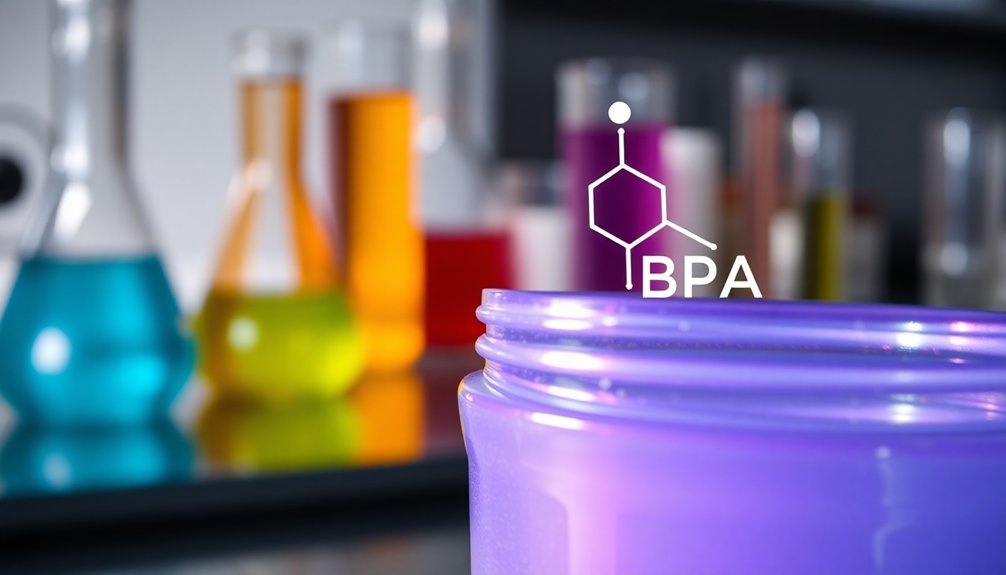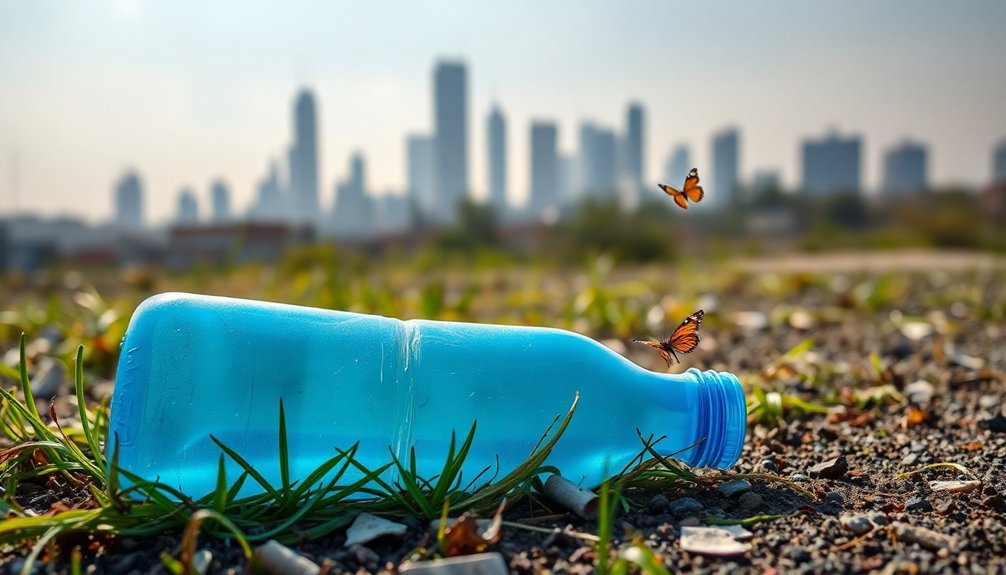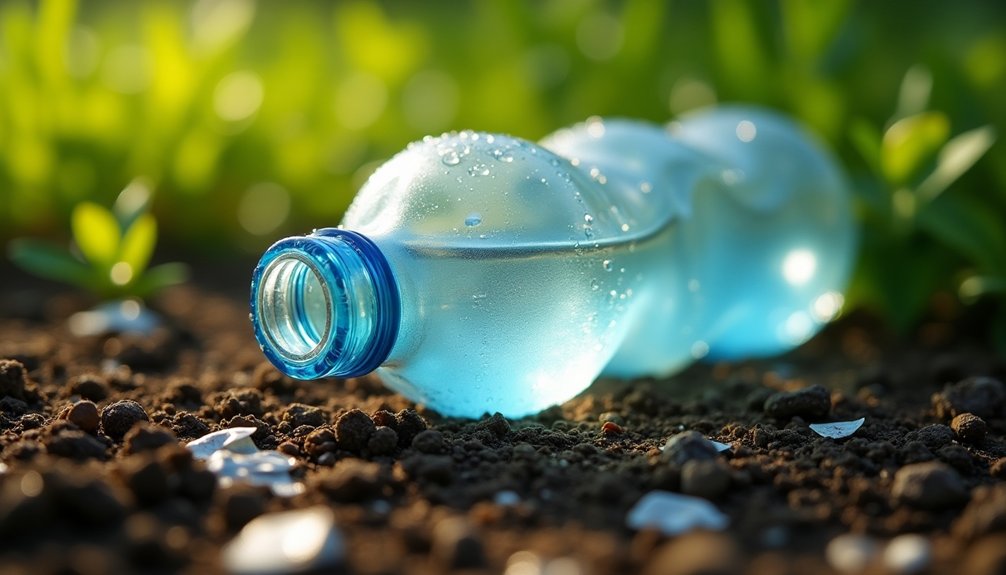Polypropylene is generally considered safe, especially for food packaging and medical use. It's FDA-approved and doesn't leach harmful substances at high temperatures, making it more reliable than many plastics. With a recycling code of 5, it indicates lower toxicity, so you're making a safer choice. While there can be risks, like the potential leaching of additives with heat or prolonged contact, overall, it's one of the least toxic options available. However, understanding its implications fully can help you make informed choices. Keep going to explore more about its safety and environmental impact.
Key Takeaways
- Polypropylene is FDA-approved for food contact, making it generally safe for food packaging and medical applications.
- It has a recycling code of 5, indicating lower toxicity compared to other plastics.
- While considered non-toxic, polypropylene may leach additives when exposed to high heat or acidic foods.
- It is not classified as carcinogenic by major health organizations like IARC or OSHA, enhancing its safety profile.
- Awareness of potential gastrointestinal disturbances and the need for improved material disclosure is essential for consumer safety.
Overview of Polypropylene
Polypropylene (PP) stands out as a versatile plastic widely used in various applications due to its strength and durability.
It's particularly favored in food packaging because it's safe for direct contact with food. Approved by the FDA, polypropylene doesn't contain harmful BPA, making it a reliable choice for items like yogurt cups and water bottles.
One reason you might choose polypropylene is its high heat resistance, which helps prevent leaching of harmful substances when exposed to heat.
When you consider recycling, polypropylene is marked with the number five, indicating its status as a safer plastic compared to others that may contain harmful additives.
Its non-toxic nature further enhances its appeal, especially in contexts where food safety is paramount.
However, it's essential to be cautious about the potential leaching of additives when polypropylene is exposed to high temperatures or used for prolonged periods with food.
Additionally, polypropylene ranks among the safer plastics, such as codes 1 and 2, which pose lower health risks compared to plastics #3, #6, and #7 that contain BPA.
Safety Considerations
When considering safety, it's essential to recognize that polypropylene is often viewed as one of the safest plastics available. The International Agency for Research on Cancer (IARC) and OSHA don't classify it as carcinogenic, and it's FDA-approved for food contact, making it a reliable choice for food storage.
However, while polypropylene is generally regarded as non-toxic, there are some safety considerations to keep in mind. It can leach additives under certain conditions, especially when exposed to heat or acidic foods, which may raise concerns about toxicity.
Here are some key points to consider:
- Leaching Risk: Additives may leach more readily with heat and prolonged contact, so be cautious with high-temperature applications.
- Transparency Matters: Not all polypropylene products disclose their chemical content, so look for manufacturers that prioritize transparency.
- Overall Safety: Despite potential leaching, polypropylene remains safer compared to many other plastics.
- Number 6 plastic alternatives, such as microwave-safe Polycarbonate alternatives, can provide an added layer of safety for consumers.
Understanding BPA and Its Implications

Many people might not realize that Bisphenol A (BPA) is a widespread chemical lurking in various plastics, particularly polycarbonate products and epoxy resins. BPA can disrupt hormonal functions, leading to serious health concerns. Research links BPA exposure to developmental problems in infants and increased cancer risks. A CDC study revealed that over 93% of urine samples from Americans contained BPA, showcasing its prevalence in our environment and daily lives. Furthermore, boiling water in plastic kettles can release microplastic particles, with potential unknown long-term effects.
| BPA Risks | Health Implications | Alternatives |
|---|---|---|
| Hormonal disruption | Developmental problems in infants | BPA-free plastics |
| Increased cancer risk | Potential long-term toxic effects | Polypropylene |
| Regulatory scrutiny | Ongoing health studies | Safer food storage
Benefits and Risks of Polypropylene
As consumers seek safer alternatives to plastics like BPA-laden products, polypropylene stands out as a popular choice. This non-toxic plastic is FDA-approved for food contact, making it a reliable option for food storage. It has a recycling code of 5, indicating lower toxicity compared to many other plastics. Polypropylene is also known for having a high melting point of approximately 160°C, making it more resistant to heat deformation.
However, while polypropylene is generally safe, there are benefits and risks to consider.
- Non-toxic: Free of BPA, it reduces exposure to harmful chemicals.
- Low emissions: Exhibits low offgassing, making it suitable for medical equipment.
- Heat sensitivity: Prolonged exposure to heat or acidic foods may increase leaching of additives.
Though polypropylene is advantageous, it's crucial to recognize potential risks. If you reuse containers improperly or heat them, you might increase the leaching of harmful substances.
These risks can lead to health issues like gastrointestinal disturbances or respiratory problems. Being aware of these factors helps you make informed choices about using polypropylene for food storage and other applications.
Always prioritize safety, and consider how you use and maintain your polypropylene products to minimize any potential risks.
Environmental and Health Impact

The environmental and health impacts of polypropylene are multifaceted, combining both advantages and concerns. While polypropylene is considered one of the safest plastics for food packaging and medical devices, it can leach additives under certain conditions. Prolonged exposure to heat or contact with acidic foods increases the risk of respiratory issues and gastrointestinal disturbances. Additionally, polypropylene's safety is also influenced by factors such as food-grade plastics, which help minimize the risk of chemical leaching.
Here's a quick overview of the key factors regarding polypropylene:
| Factor | Description | Impact |
|---|---|---|
| Safety | Generally non-toxic and not carcinogenic | Preferred for food packaging |
| Additives | Can leach under heat or prolonged contact | Potential health risks |
| Transparency | Concerns about fillers and plasticizers | Complicates toxicity assessments |
| Environmental Impact | Low offgassing emissions but poor recycling practices | Needs improvement |
Understanding the variability in leaching characteristics is crucial for minimizing health risks. Improved material disclosure and recycling practices can help reduce the environmental impact of polypropylene, making it a safer choice for you and the planet.
Frequently Asked Questions
Is Polypropylene Harmful to Humans?
Polypropylene isn't harmful to humans in general. It's FDA-approved for food contact and doesn't contain BPA. However, be cautious with heat and reuse, as additives might leach over time, potentially posing health risks.
Should I Avoid Polypropylene?
You don't need to avoid polypropylene entirely, as it's generally safe for food use. However, it's wise to limit its use with hot or acidic foods, ensuring you minimize any potential risks.
Is 100% Polypropylene Toxic?
You'll find that 100% polypropylene isn't toxic. It's free from harmful chemicals like BPA and is considered safe for food contact, making it one of the more reliable plastic options available.
What Are the Problems With Polypropylene?
You might encounter problems with polypropylene due to potential chemical leaching from additives, especially when heated or in contact with acidic foods. Additionally, improper disposal contributes to environmental pollution and raises concerns about microplastic contamination.

